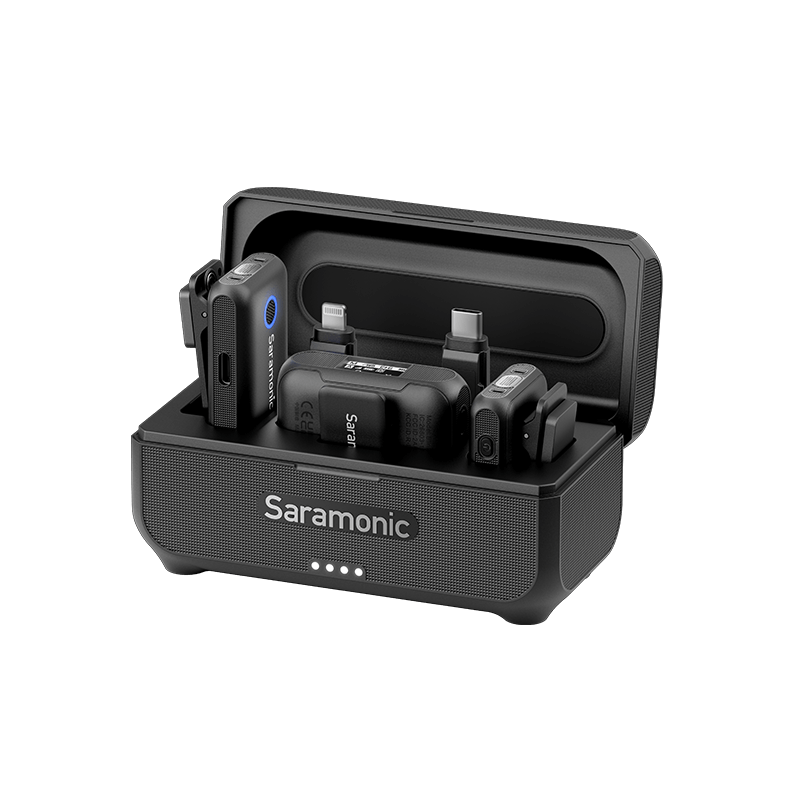Unlock the Secrets of Wireless Microphones: Discover the Types and Features That Will Change Your Sound Game!
Wireless microphones have revolutionized the way we capture sound, making audio recording and broadcasting more convenient and versatile than ever before. In today's world, where flexibility and mobility are paramount, these devices have become indispensable tools for performers, presenters, and content creators alike. Whether you’re a musician looking to move freely on stage, a speaker at a conference, or a YouTuber aiming for high-quality sound without the hassle of wires, understanding wireless microphones is crucial. This article aims to provide an in-depth look at different types of wireless microphones, their features, and how they work, helping you make informed choices that will elevate your sound game.

Understanding Wireless Microphones
Wireless microphones are devices that transmit audio signals without the need for physical cables, allowing for freedom of movement. The concept dates back to the early 20th century when the first wireless transmission techniques were developed. Over the decades, advancements in technology have led to the evolution of these microphones, from bulky models that used vacuum tubes to the sleek, compact designs we see today. Initially, they were primarily used in broadcasting and theater but have since found applications in various fields including education, journalism, and live events. This evolution has not only enhanced their reliability but also improved sound quality, making them a staple in modern audio applications.
Types of Wireless Microphones
Wireless microphones come in various types, each designed to suit different needs and environments. The most common types include handheld microphones, lapel (lavaliere) microphones, and headset microphones. Each type has distinct features that make it suitable for specific uses. For instance, handheld microphones are often favored for live performances, while lapel microphones are ideal for situations requiring discreet audio capture. Headset microphones, on the other hand, provide a hands-free option for performers and presenters. Understanding these types will help you choose the right microphone for your audio needs.
Handheld Microphones
Handheld microphones are perhaps the most recognizable type of wireless microphone. They are designed to be held in the hand, making them perfect for live performances, interviews, and public speaking. One of their key advantages is their durability; they can withstand the rigors of live shows and are often equipped with features like built-in shock mounts to minimize handling noise. Additionally, they typically offer a robust sound quality, which is essential for engaging audiences. I remember attending a concert where the lead singer used a wireless handheld microphone, allowing him to move around the stage effortlessly, engaging with the crowd while delivering a powerful performance.
Lapel Microphones
Lapel microphones, also known as lavalier microphones, are small, clip-on devices that can be attached to clothing. Their compact size makes them ideal for situations where discretion is key, such as interviews or presentations. One of the main characteristics of lapel microphones is their ability to capture sound close to the source, which results in clear audio quality. They are especially useful for presenters who want to maintain a natural speaking gesture without holding a mic. A friend of mine who is a teacher uses a lapel microphone during lectures, which allows him to move around the classroom freely while ensuring that every student can hear him clearly.
Headset Microphones
Headset microphones consist of a microphone attached to a headset worn on the head, making them a popular choice for fitness instructors, performers, and presenters. The primary benefit of headset microphones is their hands-free operation, allowing users to engage in physical activities or use their hands for demonstrations without sacrificing audio quality. They are designed to stay in place during movement, which is essential for dynamic environments. I once attended a fitness class where the instructor used a headset microphone, and it was impressive to see how she moved around the room while still communicating effectively with everyone in the class.
Key Features of Wireless Microphones
When choosing a wireless microphone, several key features should be considered to ensure optimal performance. First and foremost is the frequency range, which affects the clarity and quality of the sound. A wider frequency range typically means better sound quality. Battery life is another crucial aspect; longer battery life ensures that you won't have to worry about your microphone dying during an important moment. Additionally, sound quality is paramount—look for microphones that offer clear, natural sound reproduction. Other features to consider include the microphone's range, durability, and compatibility with other audio equipment. Understanding these features can significantly impact the effectiveness of your wireless microphone setup.
How Wireless Microphones Work
The basic principle behind wireless microphones involves the transmission of audio signals via radio waves. A wireless microphone consists of two main components: the transmitter and the receiver. The transmitter, which is either integrated into the microphone or a separate unit, converts sound waves into electrical signals and sends them out as radio waves. The receiver, connected to an audio system, captures these radio waves and converts them back into sound. This process allows users to move freely without being tethered to their audio equipment. Understanding this fundamental operation can help users troubleshoot issues and optimize their setups for the best audio experience.
Maximizing Your Audio Experience with Wireless Microphones
In conclusion, wireless microphones have transformed the way we capture and transmit audio, offering flexibility and convenience for various applications. By understanding the different types of wireless microphones, their features, and how they operate, you can make informed decisions that enhance your audio experience. Whether for live performances, interviews, or presentations, choosing the right microphone can significantly impact sound quality and audience engagement. As technology continues to evolve, staying informed about these devices will ensure you remain at the forefront of audio innovation, ready to elevate your sound game.








